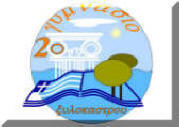

|
In the year 2008-09, our school has 164 pupils
|
|
There are eight parts of three classes: A1: 6 boys and 13 girls A2: 14 boys and 5 girls A3: 10 boys and 9 girls
B1: 12 boys and 13 girls B2: 11 boys and 14 girls
C1: 11 boys and 9 girls C2: 4 boys and 15 girls C3: 14 boys and 4 girls
As for
religion
students, and students are in the majority Orthodox Christians. There
are also many Muslims and Hip hop, pop and rock. Some pupils listen to Greek popular music. |
|
Courses taught per class: |
|
A
|
|
Hours of lessons per day |
|||
|
|
Α΄Τάξη |
Β΄Τάξη |
Γ’ Τάξη |
|
Monday |
7 |
7 |
7 |
|
Tuesday |
7 |
7 |
7 |
|
Wednesday |
7 |
7 |
7 |
|
Thursday |
7 |
5 |
7 |
|
Friday |
7 |
7 |
7 |
|
The course starts at 8.15 am. Before children enter the classroom a common prayer takes place.
There are
six breaks, as follows: |
|||
Pupils and students may go up five walks ( until noon) one per month. Two visits to attend
theater and other educational trips.
The children come to school with their bicycles or on foot, when the distance is small and
by private cars or by bus which is paid by the state, especially for children who live in
villages and away from school.
Besides the courses in the curriculum there are being taught courses after-school or during
weekends. These activities are called Innovative. In our school this year are three programs
of Environmental Education (Two for the forests and one on Economy and Culture) and a
program etwinning on «Rights of Children». In these courses, the participation of children is
voluntary. They are also supportive teaching courses.
The school year is divided into three quarters. At the end of each quarter students receive
their marks.
In them there is a degree of each lesson. This degree shows across the performance of the
pupil in the quarter (oral) and written by a repeat test. Such tests are required one for the
first quarter and one for the second or third. At the end of the school year examinations are
written in almost all subjects and in the 3 / 5 of been taught subject -matter if more than
half. The final grade comes from the combined four points. The three are among the quarters
and one of the exams in May - June. If the sum is more than 38 students succeed in this
course, if less they will be reviewed in September orally and in writing. If left many courses
will have to repeat the class. The order also reiterates, if someone does more than 114
absences.
These apply to the Junior High School.